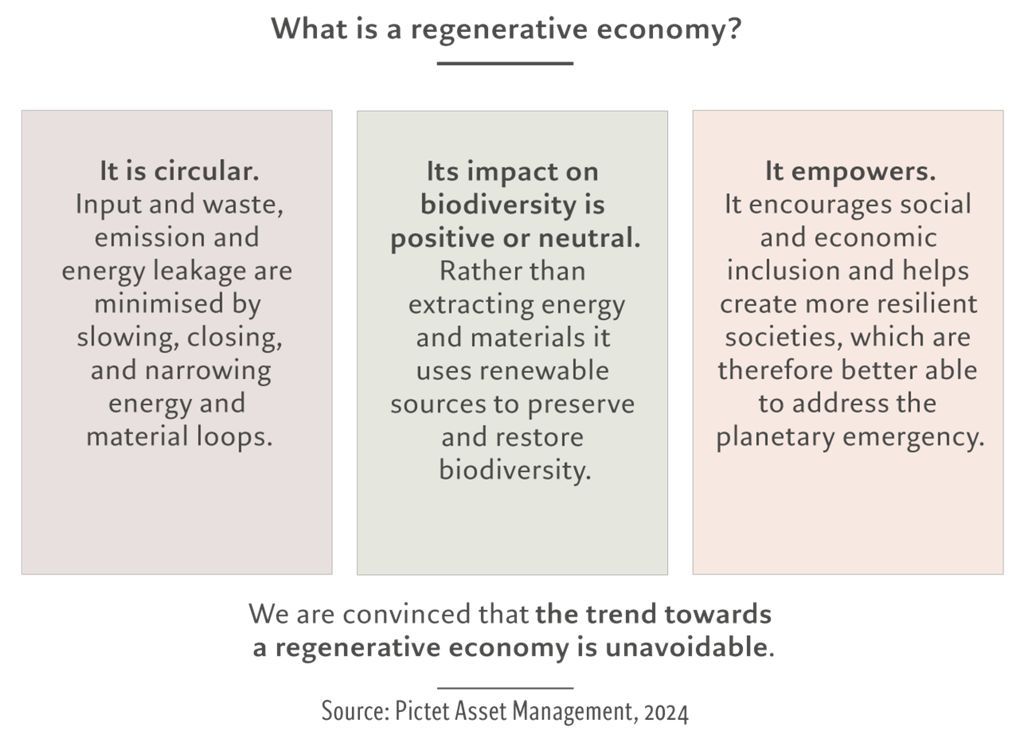As climate change awareness grows, businesses take steps to improve ecosystem resilience.
Gabriel Micheli, Senior Investment Manager, Pictet Asset Management.
Imagine an economy that runs like a natural system, such as a forest. This economy has healthy ecological and social foundations and is able to sustain and regenerate itself through cycles. This may sound like a fuzzy ideal but it is fast becoming an imperative as biodiversity loss threatens the ecosystem services and inputs on which our economy depends. Indeed, this ideal is moving closer to reality as leading companies make significant regenerative commitments.
As global awareness of the consequences of climate change rises, leading consumer companies have already moved to improve the resilience of the ecosystems from which they source the raw materials they use. This includes deploying regenerative agriculture, which improves soil health and fertility even as it supports biodiversity and reduces carbon emissions.1
We expect that, as awareness of the need to move towards regenerative activities accelerates, so will the transition towards an economy that has a neutral or positive impact on biodiversity, which is intrinsically linked to climate change. As a result, we believe companies whose products and services most contribute to the transition to a regenerative economy will benefit from superior growth over the coming decades. These companies are well positioned to benefit from a secular growth trend.
A regenerative economy has three characteristics, all of which create investment opportunities.
— Gabriel Micheli, Senior Investment Manager, Pictet Asset Management
With more than half of global GDP dependent on nature and its services,2 the regenerative transition is underpinned by the imperative to move towards a recalibrated global economy. A regenerative economy goes beyond net zero carbon emissions and repairs existing damage to our ecosystem.
In practice, a regenerative economy has three characteristics, all of which create investment opportunities: it is circular, it renews by preserving and restoring biodiversity, and it empowers – that is, it encourages social and economic inclusion to create more resilient societies that are better able to tackle the planetary emergency.

The circular aspect brings efficiency improvements. These involve minimising material and energy use across product lifetimes through less wasteful designs and processes. These efficiencies can be augmented by enabling smarter consumption, notably with second-hand exchange platforms, and by investing in the next generation of recycling and waste sorting companies to create new products from existing ones.
A regenerative economy’s renewal dimension goes beyond energies, like wind and solar power, by supporting sustainable timber, which can replace fossil-based materials and sequester CO2. Innovation of bio-based renewable raw materials and new forms of agriculture also contribute to renewal.
An economy that integrates and enables the communities it serves is one that empowers. This means providing access to inclusive financial services, such as microfinance, which assists under-served groups like women and rural communities. An empowering economy also supports small- and mid-sized enterprises, via digital selling platforms, for example. It offers access to education at all stages of life.
We believe companies contributing to these three hallmarks of a regenerative economy will enjoy superior growth over the coming decades. Supportive public policy, corporate pledges on biodiversity and sustainability-aware consumers driving new practices and demand preferences present a multidimensional force behind this trend. We expect a virtuous, regenerative cycle to emerge as the economy increasingly serves, rather than extracts from, both our communities and our natural environment.
[1] World Economic Forum, January 2023
[2] WWF, Living Planet Report, 2022




